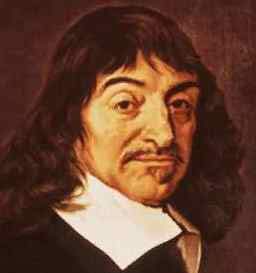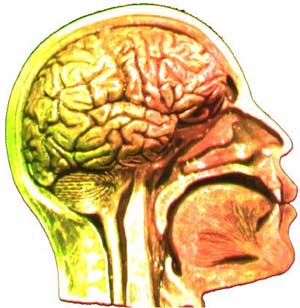For centuries, the debate over the nature of consciousness has been regarded as the exclusive domain of philosophers. However, the increasing number of books on this topic suggests a reality: scientists are now joining the conversation.
Does this mean that the question of consciousness has truly shifted from philosophers to scientists in hopes of finding a complete answer through empirical research? The answer, regardless of the perspective taken, depends on who is asked. Nonetheless, for these classic and challenging questions, the role of scientists seems to be primarily gathering and reclassifying data, as reliable sources of information are still quite scattered.
 |
| 17th Century French Philosopher René Descartes (Image: img.tfd) |
It can be said that René Descartes, the 17th-century French philosopher, has had the most substantial influence on the perspective of consciousness. Descartes argued that the body and consciousness are formed from entirely different materials; according to him, the human body exists within the dimensions of space and time, while the mind transcends these dimensions.
However, recent scientific descriptions of consciousness have largely rejected Descartes’ viewpoint; scientists now believe that the body and soul are different concepts of the same subject. According to this new perspective, consciousness is defined by the characteristics and organization of neurons in the brain. But how does this occur? And why have scientists accepted a shift in perspective and redirected their research on consciousness, a field that cannot be observed or measured like classical studies that researchers have long defended?
This shift may stem from observations made by some scientists on patients with neurological disorders, who exhibited profound changes in consciousness. From these experimental observations, many viewpoints about consciousness have gradually altered and unveiled new understandings. For example, it has been noted that in some patients who have lost consciousness, the cause may be damage to certain structures in the brainstem, leading them to slip into a comatose state or live in a vegetative state. Furthermore, while areas in the brainstem may be primarily responsible for the emergence of consciousness, they do not seem to be the only regions involved. This suggests that different states of consciousness may arise from various regions of the brain.
Additional evidence shows that when certain areas responsible for vision in the cerebral cortex are damaged, patients may experience diminished observational and recognition abilities. A notable example is a female patient named D.F., who could not recognize shapes or determine the spatial orientation of a narrow slit on a horizontal plate. However, when asked to insert small cards into these narrow slits, she could do so with ease. The paradox here is that she must know the spatial orientation of the slit to insert the card correctly, yet she seems unaware of what she knows.
 |
| Different states of consciousness originate from different regions of the brain (Image: splweb) |
Taking a step further, rather than passively observing patients with brain disorders, researchers have designed clever experiments to observe and analyze knowledge related to consciousness or the unconscious. To carry out these experiments effectively, researchers needed volunteers (who were actually hired). From the research results, scientists hope to answer the question what brain activities are essential for constructing consciousness?. In addition to using human volunteers, researchers also employ primates (such as monkeys) for experiments, especially in cases of consciousness acquired through observation.
One common experiment conducted with monkeys involves creating optical illusions, whereby the same object appears differently at different observation moments (the Necker cube is a famous example). By training monkeys to accurately observe and identify what they see on the Necker cube, researchers then identify which neurons are responsible for this recognition. This identification of neural pathways helps scientists explore which nervous systems are related to the construction of consciousness through observation. It explains how humans can form what is called observational experience when looking at an object; for instance, when viewing a rose, photons strike the retina, the signal returns to the brain, and from there the brain recognizes, analyzes, and identifies it as a rose, not … a broomstick.
Despite various successes, these experiments only provide a very small understanding of the formation and development of consciousness, and thus do not substantially address the most universal issue of human consciousness: self-awareness (the self of each individual). Nonetheless, many experimental studies have now begun, and if the research results cannot provide clues to answer where consciousness originates from in the neural network, perhaps researchers should reassess their research direction to seek answers.
Moreover, the ambition of scientists is not only to understand the biological basis of consciousness but also to know why consciousness exists? This is another research approach to consciousness that many scientists seek to answer. What selective pressures have led to the development of consciousness, and how many of our sibling species experience these pressures? Many researchers hypothesize that humans are not the only species possessing consciousness, but studying consciousness in other species depends on the concept of consciousness in those species compared to that of humans. Furthermore, it is believed that biological markers may provide answers to how consciousness developed in the early stages of life. Indeed, these are admirable ambitions.
While many issues still await researchers in the future, the fortunate reality is that there are now many young scientists participating in the race to find answers to the origins of consciousness. This gives veteran scientists hope that the question will soon be answered.


















































